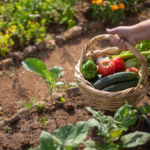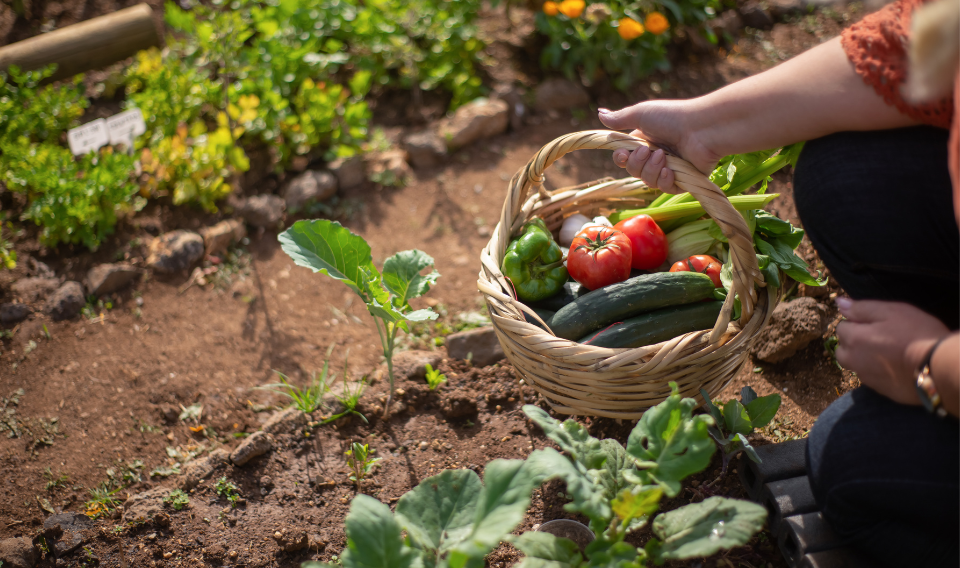
Cultivating Savings and Nurturing Financial Freedom Through Vegetable Gardening
In the quest for financial freedom, every little saving counts, and what better way to contribute to this goal than through Vegetable Gardening? Not only does it offer a respite from the daily grind, but it also provides a tangible way to cut costs and enhance your self-sufficiency. This guide will walk you through the financial perks of cultivating your own garden and how this green thumb habit can sow the seeds of financial prosperity.
The Economic Benefits of Vegetable Gardening
Vegetable Gardening is not just a leisurely pastime; it’s a powerful, economic lever that can significantly reduce your grocery bills and enhance your overall financial stability. The economic advantages of tending to a vegetable garden are numerous, spanning immediate savings on produce to long-term financial resilience. Let’s delve deeper into these economic benefits and understand how a simple garden patch can contribute to your financial well-being.
1. Direct Savings on Grocery Expenses
One of the most tangible benefits of Vegetable Gardening is the reduction in grocery expenses. Every tomato, pepper, or lettuce head grown in your garden is a direct saving on your grocery bill. High-yield vegetables, such as tomatoes, can be particularly cost-effective, offering a steady supply of produce throughout the season. When you consider the cumulative cost of buying organic produce over months or years, the savings from growing your own vegetables can be substantial.
2. Price Stability Amidst Market Fluctuations
Market prices for fresh produce can fluctuate due to various factors such as seasonal changes, transportation costs, and supply chain issues. By growing your own vegetables, you insulate yourself from these market volatilities. Your garden offers a stable, predictable source of food, ensuring that you’re not subject to the price spikes that can occur in supermarkets, especially with organic or specialty produce.
3. Long-Term Cost Efficiency
While there is an initial investment in starting a vegetable garden, the long-term savings are significant. Perennial vegetables, once planted, can provide produce year after year with minimal additional cost. Similarly, investing in quality soil, composting, and proper gardening tools can lead to a more bountiful harvest and greater savings over time. The return on investment for a vegetable garden can be quite impressive when you consider the lifespan and yield of the plants.
Starting Your Garden: A Small Investment with Big Returns
Embarking on the journey of vegetable gardening is akin to planting seeds of financial wisdom. The initial investment might be modest, but the potential returns – in terms of cost savings, health benefits, and sheer satisfaction – are substantial. Let’s explore how the small act of starting a garden can yield big returns, transforming your backyard into a bastion of abundance and financial savings.
1. Low Initial Costs with High Yield Potential
The beauty of vegetable gardening lies in its simplicity and affordability. The initial costs are relatively low, especially compared to the ongoing expenses of purchasing fresh produce from stores. Basic gardening tools, a few packets of seeds, and some quality soil or compost are all you need to get started. These simple beginnings, however, hold the promise of bountiful harvests. Plants like tomatoes, zucchini, and beans are known for their high yield, providing a steady supply of produce throughout the season and offering substantial savings on grocery expenses.
2. The Power of Heirloom Seeds and Propagation
Investing in heirloom seeds or learning the art of propagation can amplify the returns of your garden exponentially. Heirloom seeds can be saved and replanted year after year, preserving the genetic diversity and unique flavors of your produce. Similarly, techniques like propagation, where plants are grown from cuttings, bulbs, or scraps, can multiply your garden’s output without additional investment. This means that the return on your initial investment grows with each passing season, making your garden a gift that keeps on giving.
3. Maximizing Space and Resources
Even in the smallest of spaces, innovative gardening techniques such as vertical gardening, container gardening, or square foot gardening can yield impressive results. These methods maximize the use of space and resources, ensuring that even a modest investment in a small plot or a few containers can produce a significant amount of vegetables. This space efficiency not only makes gardening accessible to those with limited space but also increases the cost-effectiveness of your gardening endeavor.
4. The Ripple Effects of a Thriving Garden
The benefits of your initial investment in a garden extend beyond the boundaries of your backyard. A thriving garden can become a catalyst for community engagement, offering opportunities for seed swaps, produce exchanges, or simply sharing the bounty with neighbors and friends. This not only enriches your social life but can also lead to shared resources, knowledge, and potentially more savings as you exchange gardening tips, produce, or even homemade preserves and other goods.
Reducing Waste and Maximizing Resources
Vegetable Gardening teaches you to be resourceful. Composting kitchen scraps not only reduces waste but also provides free, nutrient-rich soil for your garden. Collecting rainwater can also cut down your water bill and provide your plants with a sustainable water source. These practices not only save money but also align with a lifestyle of environmental sustainability.
The Health Benefits and Cost Savings
Growing your own produce isn’t just good for your wallet; it’s great for your health too. Home-grown vegetables are fresher and free from the harmful pesticides and chemicals often found in store-bought produce. This not only enhances your health but also saves on future medical bills and health-related expenses. The physical activity involved in gardening also contributes to your physical well-being, providing a natural and enjoyable form of exercise.
Building Community and Sharing the Bounty
Vegetable Gardening has a communal aspect; it’s an activity that can be shared with family, friends, or neighbors. Excess produce can be shared or bartered within your community, fostering relationships, and creating a network of support and exchange. This can lead to shared resources, knowledge, and even savings as you exchange produce, seeds, or gardening tips with others.
Educational Value and Financial Lessons
Gardening is not just about planting and harvesting; it’s a journey filled with learning and growth. It teaches patience, diligence, and the importance of consistent care and effort. These lessons parallel the principles of sound financial management, such as investing time and resources wisely and watching your savings grow, much like your garden.
Overcoming Challenges and Reaping Rewards
While Vegetable Gardening comes with its set of challenges, including pests, weather conditions, and learning the ropes, the rewards are undoubtedly worth it. The satisfaction of enjoying your home-grown produce and knowing you’ve contributed to your financial goals is immensely gratifying. Moreover, the skills you develop in troubleshooting and persevering through gardening challenges can be applied to managing your finances, making you more adept at overcoming financial obstacles.
Conclusion
Vegetable Gardening is more than just a pastime; it’s a strategic move towards achieving financial freedom. It offers a practical way to cut costs, enhance your health, and live a more sustainable and self-sufficient lifestyle. So why not put on your gardening gloves, sow some seeds, and watch as your garden – and your savings – flourish? For more insights into sustainable living and financial planning, consider visiting Financial Fitness Warrior for valuable resources and guidance. Embark on your gardening journey today, and take a significant step towards cultivating a greener, more financially free future.
Recommended Book To Read: The Wealthy Gardener


















